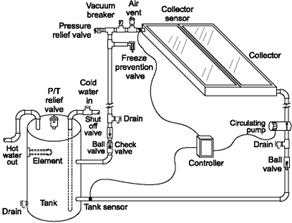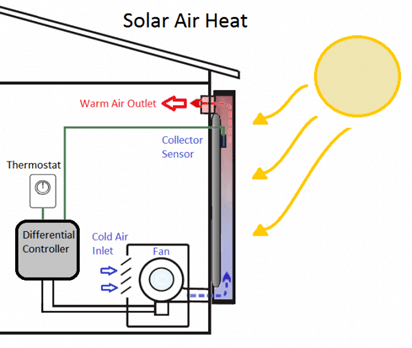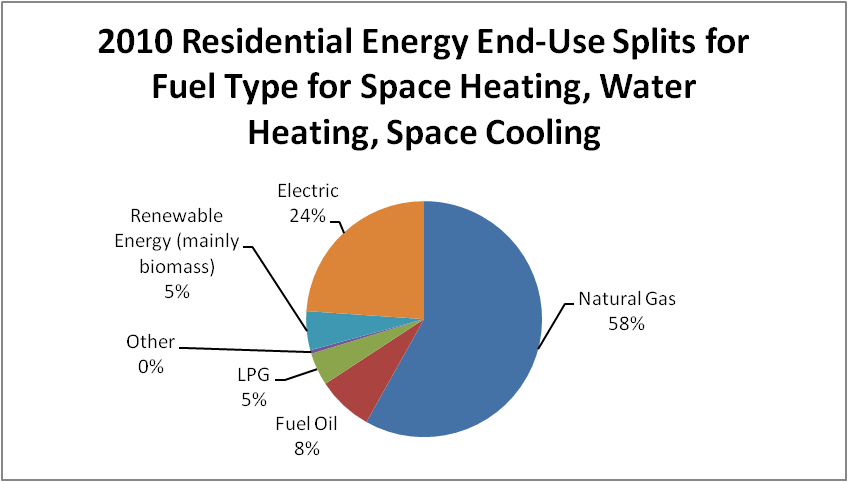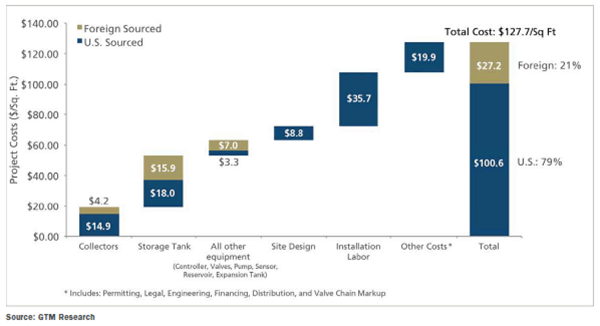- Solar heating systems are affordable for families. The return on investment can be as little as 3-6 years. Commercial systems help companies reduce and manage their energy bills, managing long-term costs. Meanwhile, fossil fuel prices fluctuate considerably and are expected to rise significantly over the next decade.
- Water heating, space heating, and space cooling accounted for 72 percent of the energy used in an average household in the U.S. in 2010 ‐ representing a huge market potential for solar heating and cooling technologies!
- In 2010, the U.S. saw 35,464 solar water heating systems and 29,540 solar pool heating systems installed, heating a total of more than 65,000 homes, businesses and pools.
- Post=2010 has also produced some record-breaking solar air heating installations, with systems ranging up to 10,000-50,000 ft2 on a single wall being installed across the country, showing the large scale energy opportunity in addressing space/ventilation heating.
- Three out of four (74 percent) Americans agree, ‘the growth of the solar water heating industry will produce jobs and help the American economy.’ This support is strong across regions of the country and across party lines.
-
olar water heating
-
solar space heating
-
solar cooling
-
solar pool heating
How Does SHC Work?
SHC systems trap the heat from the sun (solar radiation) and transfer the heat to water or air for use as thermal energy. While both SHC systems and solar photovoltaic (PV) systems involve collector panels , they are very different technologies.


Solar water heating systems are composed of three main elements: the solar collector, insulated piping, and a hot water storage tank. While there are many design variations, essentially the solar collector gathers the heat from the sun and transfers the heat to potable water. This heated water flows out of the collector to a hot water tank, and is used as necessary.
Why is the SHC important?
Water heating, space heating, and space cooling accounted for 72% of the energy used in an average household in the U.S. in 2010 ‐ representing a huge market potential for solar heating and cooling technologies!

How does SHC Help with Energy Security?
Solar heating and cooling technologies can displace the need for natural gas, fuel oil, and electricity to heat homes and businesses, thereby reducing the dependence on imported fuels.

How does the SHC grow the U.S. economy?
SHC imported $13.6 million dollars of SHC goods in 2010, but exported $16.3 million dollars, for a positive trade balance of $3 million. For every dollar invested in SHC technology, 79 cents will stay in the U.S. This helps drive investment in the U.S. and keeps our nation economically competitive.
